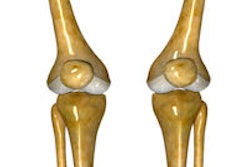Dear Digital X-Ray Insider,
Knowing the expected age of patella ossification is valuable because it enables reporting radiologists to spot an unexpected case, and also it can help in patients suspected of having a disorder that involves absent patellae or delayed patella ossification, according to researchers from a top London hospital.
The lack of robust studies in this area encouraged them to investigate 331 x-rays conducted at Barts Health National Health Service Trust. Their findings are well worth a close look, and you can do so here.
Continuing with the musculoskeletal theme, the migrant crisis has prompted a Turkish group to seek a more accurate way of evaluating bone age using pelvic radiographs in young adults. Between June 2011 and June 2015, they studied the anteroposterior digital pelvic radiographs of 698 individuals. For the results of their analysis, click here.
Earlier this month, a meeting dedicated to radiological safety took place in Dubai, United Arab Emirates, providing further confirmation that dose awareness is increasing fast in the region. We interviewed session speaker Wadha Al Shamsi, medical physicist and chief medical officer for clinical imaging at Al Ain Hospital in Abu Dhabi. Click here for the full story.
Ghost imaging generates images by analyzing correlations between two light beams, the more powerful of which doesn't bounce off the object in question. The technique has been demonstrated at visible and infrared wavelengths, but now two international groups have extended it to the x-ray region. Get the details here.
For a full list of stories, see below or go to the Digital X-Ray Community. Also, make sure you check back regularly to see our latest coverage.



















